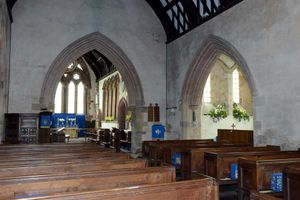Church spotlight: St Mary's Church in Acton Burnell
When the American Civil War came to an end 150 years ago this week, it was not the average end to hostilities.













Report has it that the victorious Union's General Ulysses S Grant met up with the vanquished General Robert E Lee, and the two men respectfully raised their hats to one another, before going their separate ways.
"Lee rode off to break the sad news to the brave fellows whom he had so long commanded," wrote a senior member of the winning camp. If there was ever such thing as an heroic defeat, General Lee had surely achieved it.
Over the centuries that followed, Lee has become something of an American legend, respected by both sides of the bitter, bloody war, who became more popular following his defeat than he had been before it.
What many people probably do not know is that General Lee's family comes from Shropshire, and that every year a steady flow of American visitors head to St Mary's Church in Acton Burnell to see their tombs.

Built: circa 1270-90
Founder: Robert Burnell
Designated Grade I listed building June 13, 1958
Interesting monuments include: a tomb chest to Sir Nicholas Burnell, featuring a brass depicting an armoured knight under a canopy; a memorial to Sir Richard Lee, beneath an arch with a rich architectural surround; Nicholas Stones monument to Sir Humphrey Lee; a wall tablet to Lady Mary Smythe, who died in 1764, surmounted by a cross and two burning lamps, which may be the work of T F Pritchard; a military tablet dated 1794 to Sir William Smythe, signed by the King of Bath.
Main services: 8.45am Communion, on the second Sunday of each month; evensong at 6.30pm on the third Sunday of each month[/breakout]
Rector, the Rev Geoff Garrett, says the church to the south of Shrewsbury attracts around 1,000 visitors this year, many of them Americans with a particular interest in the Lee family. There is an enormous monument to Sir Richard Lee, who died in 1591, and his wife, with two alabaster effigies lying on a slab, set behind their nine children. On the opposite wall is a typical Jacobean memorial to Sir Humphrey Lee, who died in 1591, and his wife, featuring two figures kneeling either side of a prayer desk, with six kneeling children immediately below.
"A lot of people come to look at those monuments," says Mr Garrett, a 57-year-old married father-of-three who became rector around two years ago.
"We had a group of Lee family members who came over from America last year, they had gone to the Shrewsbury tourist information centre, and the tourist guides took them around the places they wanted to go. They were related to the General Lee."
Springtime is always a particularly beautiful time to visit the church and neighbouring castle, when its famous daffodils are in full bloom. The flowers, which were planted between 1862 and 1922, were declared a site of horticultural interest by the Royal Horticultural Society, and there are many keen gardeners who come to admire the collection.
St Mary's is a grade I listed building, constructed towards the end of the 13th century by Robert Burnell who became Lord Chancellor of England, and Bishop of Bath and Wells.
Next to the ruins of Acton Burnell Castle, it is described as the county's "finest Early English church" by historian John Leonard in his book The Churches of Shropshire.
It was built in sandstone with tiled roofs, and most of the original exterior has been preserved, with a five-bay chancel, north and south chapels, and a tower in the angle between the chancel and the north transept.
Building work began at the west end, and proceeded eastwards, and it is interesting to compare the simple west window, with three stepped lancets, with the more elaborate four-light east window, with Purbeck marble shafts.
The octagonal font, at the west end of the nave, is particularly exquisite, with eight shafts around the stem.
Mr Garrett, who worked as a bank clerk at various Barclays before deciding to train for the priesthood in 1983, says while the old church is a wonderful place to be in the summer months, it does get very cold in the winter. At the moment the church is looking to raise funds to improve the heating system, and Mr Garrett says that raising its profile as a visitor attraction could play an important role in this.
"Churches in general are very under-used buildings, and we're seeing how we can use the buildings more for visitors."




